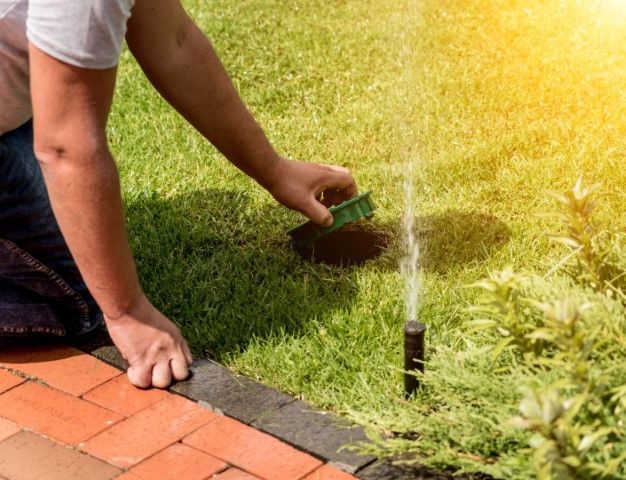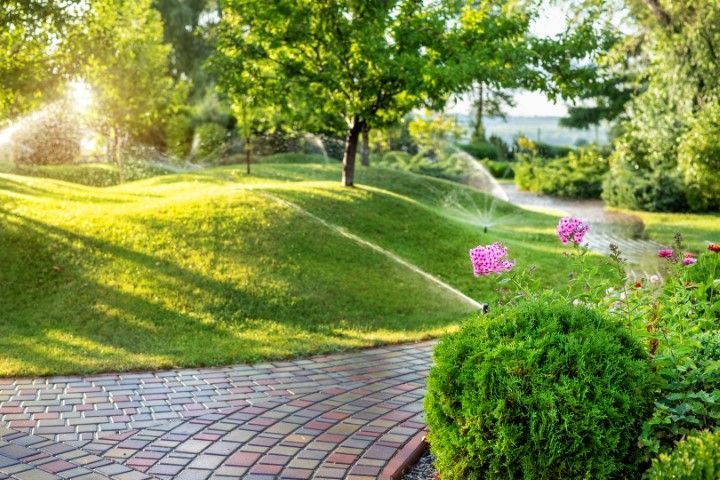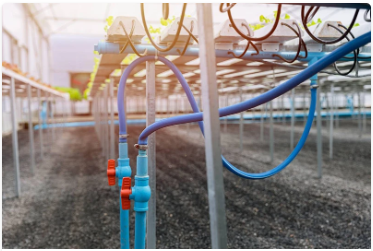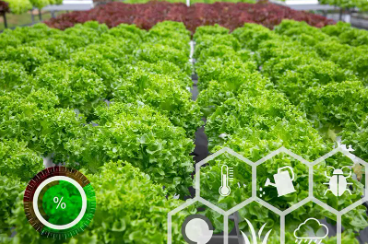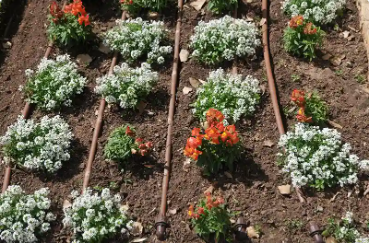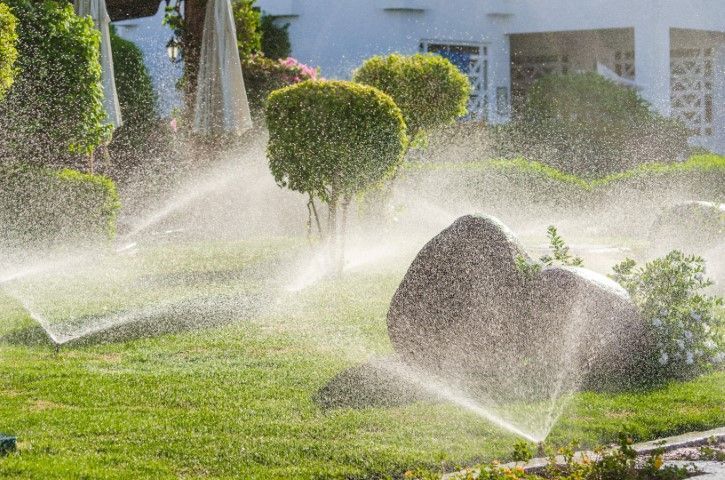Revolutionize Your Watering Routine With These Innovative Irrigation Systems - SPRINKLER SYSTEMS OF SANANTONIO
Revolutionize Your Watering Routine With These Innovative Irrigation Systems

In the quest for gardening efficiency and sustainability, innovative irrigation systems are transforming traditional watering routines. By integrating smart sprinkler systems that harness sensor and weather data, gardeners can optimize watering schedules, mitigating the risk of over-watering and promoting healthier plants. Drip irrigation delivers water precisely to the roots, significantly reducing evaporation and runoff. Adding to these advancements, rainwater harvesting systems and automated soil sensors offer eco-friendly and precise water management solutions. Discover how these cutting-edge technologies can enhance your garden’s growth and sustainability like never before.
Smart Sprinkler Systems
Smart sprinkler systems leverage advanced technologies to optimize water usage, ensuring precise hydration tailored to the specific needs of various plant species. Utilizing smart irrigation technology, these systems integrate sensors, weather forecasts, and soil moisture data to determine the exact amount of water required. The result is a significant reduction in water waste and improved plant health through precise, data-driven irrigation.
Central to the functionality of smart sprinkler systems are wireless controller options. These controllers enable remote management and real-time adjustments via smartphone applications or web interfaces. They offer the flexibility to customize watering schedules based on plant type, soil conditions, and local climate variations. Additionally, many wireless controllers are compatible with home automation systems, providing seamless integration into existing smart home ecosystems.
An essential feature of these systems is their ability to adapt to changing environmental conditions. For instance, if rain is forecasted, smart irrigation technology can automatically pause or adjust watering schedules, thus preventing over-irrigation and conserving water resources. By leveraging these advanced technologies, smart sprinkler systems deliver precise and efficient irrigation solutions, ensuring optimal plant growth and sustainability.
Drip Irrigation Solutions
Drip irrigation solutions offer a highly efficient method for delivering water directly to the root zones of plants, minimizing evaporation and runoff while maximizing hydration precision. This technique, often categorized under micro irrigation, employs a network of valves, pipes, tubing, and emitters to deliver water in a controlled manner. Unlike surface irrigation, which can lead to significant water loss due to evaporation and runoff, drip irrigation ensures that water is delivered exactly where it is needed, thereby improving water use efficiency by up to 90%.
The system’s precision is particularly advantageous for plants with specific water requirements, such as row crops, orchards, and vineyards. Emitters can be calibrated to deliver precise quantities of water, ensuring optimal soil moisture levels and promoting healthy root development. Additionally, drip irrigation reduces the risk of fungal diseases by keeping foliage dry, a common issue with traditional surface irrigation methods.
Maintenance of drip irrigation systems is also straightforward. Regular checks on emitters and tubing can prevent clogs and leaks, ensuring consistent water delivery. By integrating modern technology, such as soil moisture sensors and automated timers, drip irrigation systems can be fine-tuned to meet the exact needs of various plant species, further enhancing their efficiency and efficacy.
Eco-Friendly Watering
Leveraging advancements in irrigation technology, eco-friendly watering solutions prioritize sustainability by optimizing water consumption while maintaining optimal plant health and growth. Central to these solutions is rainwater harvesting, which involves capturing and storing rainwater for future irrigation needs. This method significantly reduces dependency on municipal water supplies, thus conserving a vital resource and lowering utility costs.
Rainwater harvesting systems can be integrated with advanced irrigation setups to automatically distribute collected water based on plant requirements, ensuring precise hydration. The implementation of drip irrigation with rainwater harvesting can further enhance water efficiency by delivering water directly to the root zone, minimizing evaporation and runoff.
Sustainable gardening practices also benefit from the incorporation of smart irrigation controllers that adjust watering schedules based on weather conditions, soil moisture levels, and plant species. These controllers enable gardeners to create a highly efficient, responsive watering system that reduces water waste and promotes healthy plant growth.
Moreover, eco-friendly watering systems often utilize permeable materials for pathways and garden beds, allowing rainwater to percolate into the soil rather than running off. This not only supports groundwater recharge but also reduces the risk of erosion and nutrient depletion, fostering a more resilient and sustainable gardening environment.
Automated Soil Sensors
Automated soil sensors precisely monitor soil moisture levels, enabling real-time adjustments to irrigation systems for optimal plant hydration. Utilizing advanced sensor technology, these devices are strategically placed within the soil to measure moisture content accurately. By providing continuous data on soil moisture, they facilitate the precise delivery of water, reducing wastage and ensuring that plants receive the exact amount of hydration required.
The integration of automated soil sensors within an irrigation system enhances its efficiency by allowing for data-driven decisions. For instance, the sensors can detect when the soil moisture drops below a critical threshold, prompting the system to activate irrigation. Conversely, when the soil moisture is adequate, the sensors can signal the system to halt watering, thereby preventing over-irrigation and promoting healthier plant growth.
The precision-oriented nature of sensor technology ensures that irrigation is tailored to the specific needs of different plant species, soil types, and environmental conditions. This level of customization is instrumental in maintaining optimal soil health and plant vitality, particularly in agricultural settings where resource management is paramount. As such, automated soil sensors represent a significant advancement in modern irrigation practices, offering a sophisticated solution to the challenges of water management and plant care.
Advanced Timer Controls
Building upon the precision of automated soil sensors, advanced timer controls further refine irrigation schedules by allowing for meticulously timed water delivery. These systems employ digital scheduling to enable gardeners and agricultural professionals to set precise watering times down to the minute. This heightened level of control ensures plants receive the exact amount of water needed, reducing waste and optimizing plant health.
One of the most significant advancements in these systems is weather integration. Advanced timer controls can now sync with local weather forecasts, adjusting irrigation schedules based on expected rainfall and temperature fluctuations. This adaptive feature prevents overwatering during rainy periods and compensates for increased evaporation during hotter days. Such integration ensures that water resources are used efficiently, promoting sustainability.
Moreover, the digital scheduling capabilities of these advanced timers allow for the creation of multiple, customized watering programs. This is particularly beneficial for gardens or agricultural fields with diverse plant species, each with unique watering needs. By tailoring irrigation schedules to specific plant types and growth stages, these systems enhance overall plant vitality and productivity. Precision-oriented, plant-focused, and technologically advanced, these timer controls represent a significant leap forward in modern irrigation management.
- Avoid These 5 Common Irrigation Blunders Every Homeowner Makes
- Your Go-To Guide for Picking the Perfect Sprinkler System for a Lush Lawn: Handy Tips and Tricks
- Impact of Climate on Irrigation System Design and Operation
- The Role of Soil Moisture Sensors in Irrigation Efficiency
- Cost-Effective Irrigation Solutions for Small Gardens
